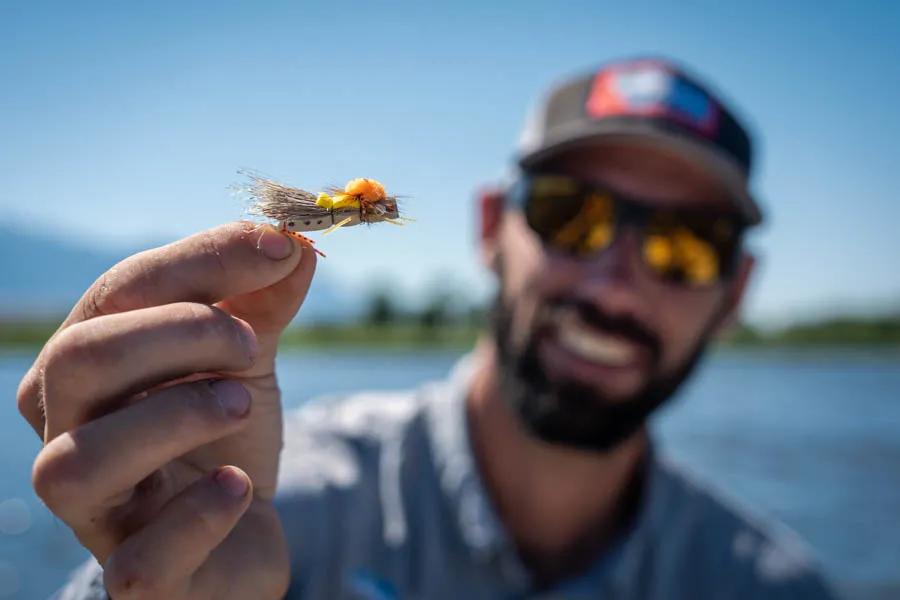
During late summer in Montana or anywhere that trout swim—Chile, Argentina, Mongolia, or New Zealand to name a few—anglers and fly fishing guides are always on the look out for dry fly fishing with terrestrials. There’s a lot of hype associated with trout eating hoppers, ants, and beetles. And rightly so—fly fishing is a visual sport and seeing a trout eat a dry fly is the reason many of us started fly fishing in the first place.
When fishing terrestrials, or insects that live on land and end up on the water, observation and a few extra tactics are necessary. From the spruce moth hatch on the Gallatin River near Big Sky and Bozeman to beetles on the Madison River to grasshoppers on the Yellowstone River, land-dwelling insects make up a huge part of a trout’s diet during the dog days of summer.
However, fishing terrestrials is not as simple as grabbing a few Dave’s Hoppers or one of the hoppers on our Best Hopper Pattern list, a spool of 2X, and making a few marginal drifts. A little more skill and thought is required--but the extra skill and satisfaction is ultimately one of the appeals of dry fly fishing
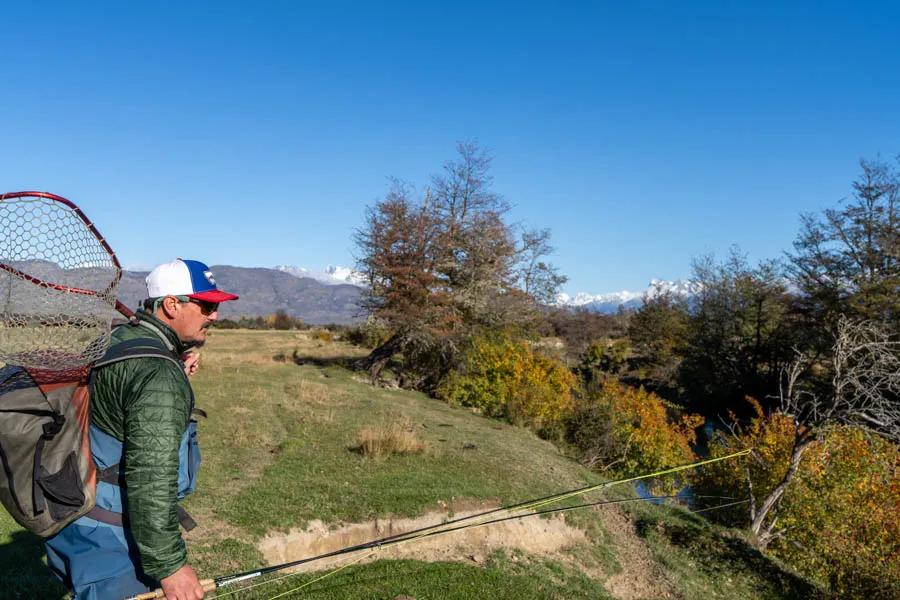
Be Patient and Survey the Situation
Before you rig up and tie on your tippet and choose your flies, you must observe what is happening out there. Is there a hatch and are fish rising? Are there any banks or structure providing shade or cover? Is it windy and if so where is the wind coming from? Answers to these questions is clutch. If there isn’t a hatch, fish may be eating terrestrials. Bank structure and overhead cover protect bigger fish—so drift a fly near them and maybe a big fish rises. Dominant or sustained winds carry insects onto the surface.
Embrace the Breeze
Any other time when fly fishing in Montana, wind can be a four-letter word. When fishing terrestrials a sustained wind is a very good thing. Our Montana fly fishing guides have had many memorable days fishing terrestrials during sustained winds. Additionally, if a farmer is harvesting a riverside field and there is a wind that will blow more terrestrials into the water fish may key on terrestrials. Because there are places on the Missouri River with some riverside homes, when a homeowner is mowing their yard it sends feeling grasshoppers, ants, and beetles into the river…which entices the fish to feed.
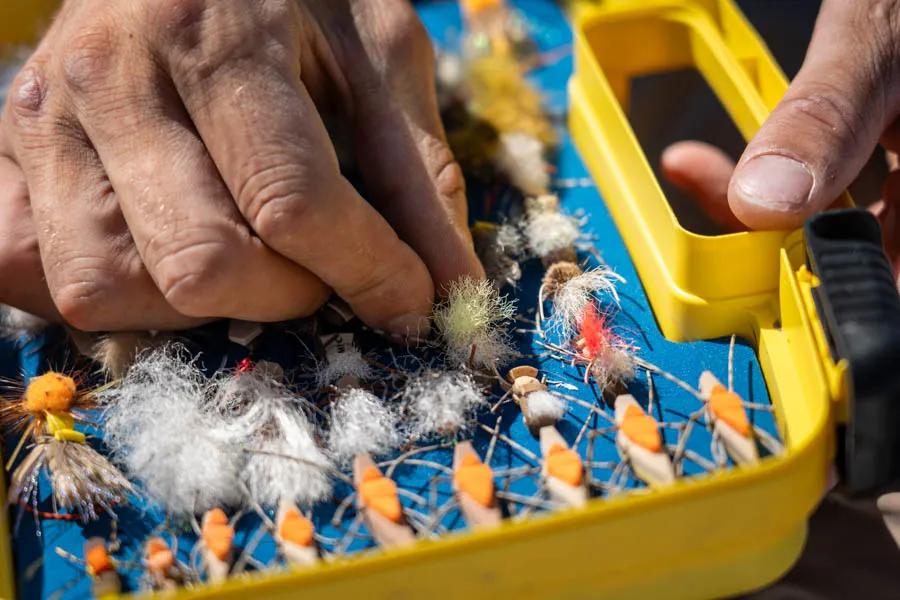
Bring it Home with Foam
The addition of foam to terrestrial patterns really changed the game in favor of the angler. Because foam floats very well, is available in all sorts of colors, and it can be cut and molded, foam may have been the best thing ever to happen to fishing terrestrials. Some of our favorite grasshopper patterns like Thunderthighs, the Morrish Hopper, and the Water Walker have substantial foam in them. Foam flies also make it easier to fish two flies. Foam allows the first fly to be a well-floating fly that can hold up a beadhead nymph or emerger.
Keep an Open Mind
Most trout in late summer are forced to be opportunistic feeders. Because hatches are less prolific, a hungry trout can’t let an easy meal go by without at least inspecting it. So if a trout is opportunistic when eating a terrestrial, then you should be opportunistic to and fish grasshoppers, ants, or beetles. However, you may need to tweak your tactics and techniques a little. Consider putting some movement into the fly like twitching a grasshopper. Twitching ‘hoppers can elicit some very exciting takes. Watch the weather forecast and look for a river that might have sustained winds in one direction and then target a bank downwind in case bugs blow into the water. A favorite tactic of some veteran Montana fly fishing guides is to fish fly larger than what might be expected. You will catch less of the smaller fish, but stick with it and you might catch a dandy.
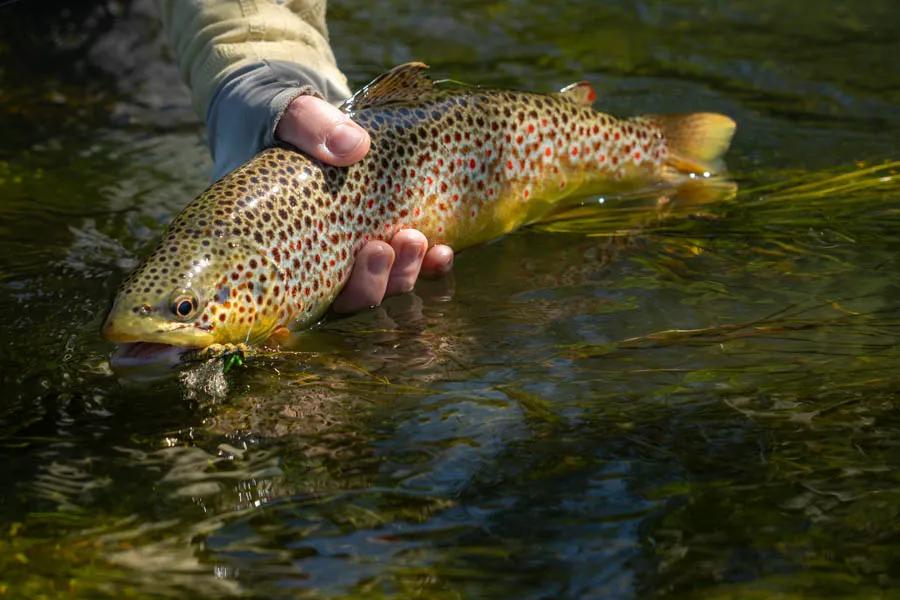
Scratch the Itch and Twitch
Once a hopper lands in the water they begin to aggressively kick and swim, furiously trying to return to dry land. Imitating the kicking action of natural grasshoppers by twitching an artificial imitation can often increase your catch rates. Twitching hopper patterns is a very active experience and increases the fun factor when you are on the river. Actively casting, twitching, recasting, and occasionally reacting to a “hopper eat” is a great way to enjoy going fly fishing for trout in late summer.
Adjust Your Fly Line, Leader, and Tippet
If you change your leader and tippet material when fishing submerged nymphs or streamers, you should do it when committing to fishing terrestrials. Be sure to have a high-quality weight-forward to powerful front-tapered floating fly line. A quality fly line is crucial when turning over heavy flies and and stout leaders. It also helps you get the best possible drag free drift. It is important to choose the right leader to get a better drift and catch more fish. Because wind is often a factor and many terrestrials are big and bulky, especially the best grasshopper patterns, choose a stout leader that is tapered appropriately so the tippet is also supple enough to get a good drift.
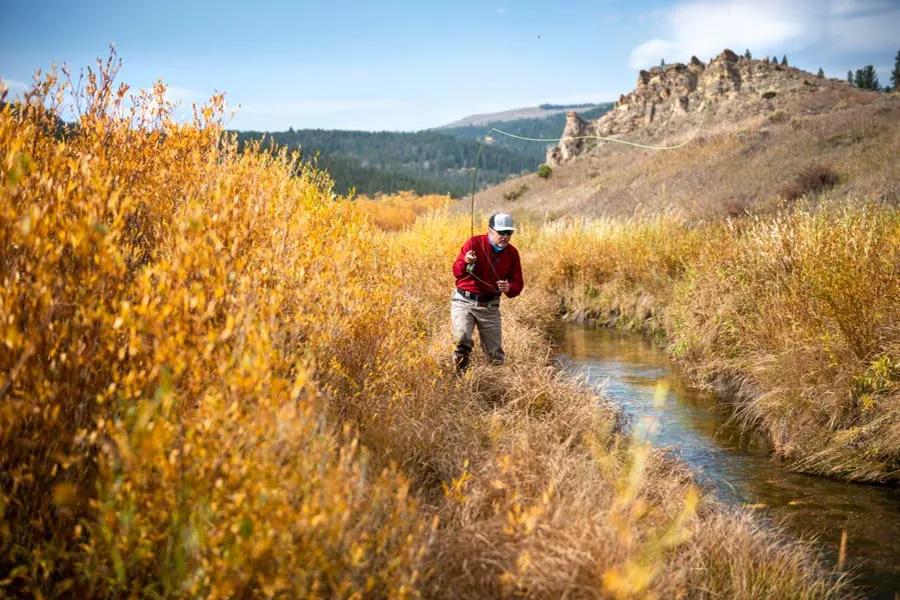
Late July, August, and early September in Montana are circled on many angler’s calendars. This is the time in our backyard when grasshoppers, ants, beetles, and other terrestrials can be found floating on our local rivers, creeks, and streams. During this timeframe, catch rates may not be as high as post-runoff but what this timeframe might lack in the numbers game, it makes up for in the visual appeal of seeing a trout rise to the surface and gobble up a grasshopper, ant, or beetle.
